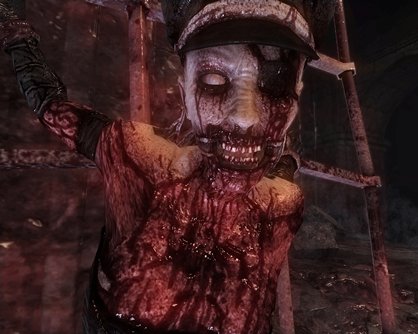The Top 7… Native American stereotypes
We look at digital depictions of North America's First Peoples
People also get pissy if they’re a member of an ethnic group upon whom genocide has been committed, and the atrocity is portrayed in the media with anything but the utmost sensitivity. If you’re not condemning the massacre, you’re complicit. Or worse, you’re reveling in it.

Above: Abs of Steel, Apache edition
I bring this up because it has direct bearing on the depiction of Native Americans in videogames. Games are notoriously bad at delivering rich characters and resonant emotional stories. Game creators lean heavily on generic stereotypes as a sort of narrative shorthand, so they can get on with designing levels and structuring core gameplay. Because games rely so heavily on stereotypes to invoke character, they are particularly illustrative of prevailing cultural attitudes.
If most game characters are bland archetypes, why then does it seem especially mean-spirited to depict Native Americans as feather-wearing, tomahawk-wielding cardboard standees? Check the first two paragraphs: having your culture all but annihilated adds an extra sting to the irreverent depiction of your sacred symbols. Game designers are quick to co-opt tribal trappings without any consideration for the culture behind the image. The result is often as offensive to Native Americans as Piss Christ is to Christians.

A little empathy can go a long way. Thanksgiving is a rare time when we’re actually encouraged to be a bit introspective and to consider the feelings of others. This year, while giving thanks for cheap oil and our invincible military, let's pause to consider our callous attitude toward this continent’s First Peoples and give thanks for the fact that they’ve figured out a way to cash in on the gullible among us.

Sgt. Frank Delgado - Clive Barker’s Jericho
Token Native Americans appear in other media (seeChakotay orDawn Star,) so it’s no surprise that they’d show up in games too. In Jericho, Clive Barker promiscuously pillages fragments of mythology from around the globe to cobble together his obtuse premise: God created a monster called the Firstborn, who wants to destroy the rest of God’s creations. Cue the litany of pseudo-mystical ranting, with everything from Sumeria to the Templars to Aleister Crowley and the Nazis tossed in for effect. Enter Jericho Squad, a carefully multicultural special forces unit from the Department of Occult Warfare, including, you guessed it, a token Native American!
Weekly digests, tales from the communities you love, and more

Now where were we? Right, in addition to being the token Native American Frank is also involved romantically with Jericho Squad’s ninja-bloodmage-scout, Sgt. Church. Like the plot, the characters are bizarre conglomerations of references that are as bizarre and baffling as they are culturally inaccurate. Pile all that on top of repetitive gameplay and idiotic AI, and you have a game destined to be little more than a historical footnote in some snarky game site’s Top Whatever list.

Turok - Turok: Dinosaur Hunter, Turok 2: Seeds of Evil, Turok: Evolution, Turok: Rage Wars, Turok 3: Shadow of Oblivion, Turok: Battle of the Bionosaurs, Turok
Turok: Dinosaur Hunter was one of the first prominent Native American protagonists in mainstream gaming. He’s been through many evolutions over the years, starting as a comic book character and eventually finding his way into a series of popular games starting with 1997’s Turok: Dinosaur Hunter. In the transition from comics to games, much of Turok’s heritage became irrelevant backstory whose salient points were communicated via the game’s box art.

This change in direction is likely due as much to the differing nature of storytelling in games versus comics and not necessarily representative of any inherent bias against Native Americans. Still, his name was changed to Joshua Fireseed and his roots were mainly explored through his coiffure and sweet bow-and-arrow skills. Who else but an Indian would have the hunting prowess to stalk a dinosaur?
Turok 2: Seeds of Evil introduced the Energy Totem and talismans that imparted certain powers. While these smack of generic “native mysticism,” the games also introduced such decidedly non-indigenous weapons as the Cerebral Bore and the Nuke, which Turok/Joshua used to dispatch time-traveling robosaurs and aliens for a group of gods called the Lazarus Concordance. Joshua? Lazarus? Cerebral Bore? It all sounds a bit Judeo-Christian if you ask me. And besides, a real Indian would never kill a dinobot without using all its parts.

Above: Turok gently caresses one of his many dino-friends
In spite of the non-portrayal of his ancestry, Turok/Joshua remains one of the most prominent Native Americans in videogames because the early N64 games were groundbreaking for their time. Consider how Rage Wars presaged our Achievement obsession with its Medal-collecting multiplayer modes. Or how the influence of Seeds of Evil’s dismemberment system and whimsical multiplayer Frag Tag (in which one player spawns as a monkey) are still apparent in today’s games.


